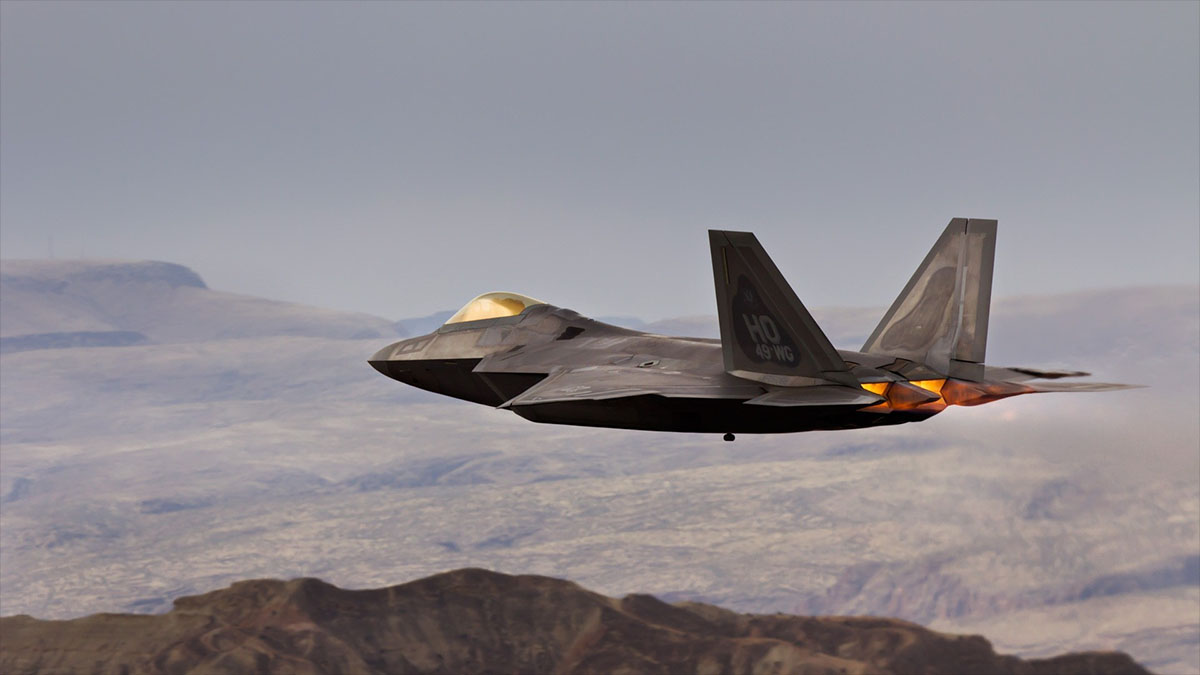is time running out for today’s fighter jets?

One of the biggest assets the American military has at its disposal is its vast fleet of fighter jets stationed in bases and ships around the world. Unfortunately, roughly half of them aren’t ready for combat operations at any given time and even worse, as existing planes are getting older, it’s becoming harder and more expensive to keep them flying. This data was accumulated by the Foxtrot Alpha defense blog from reports on military readiness in light of Secretary of Defense James Mattis’ directive to make sure at least 80% of jets are ready for battle at any given time, reports which strongly indicate that such lofty goals are more aspirational then realistic.
The main problem appear to be aging jets flying long past what their airframes were designed to handle and surprisingly, F-22s and F-35s which have readiness rates hovering around or below 50% or so. With all F-35s now grounded after a crash, those numbers aren’t going to improve quickly either. And what’s most aggravating about these newer, so-called fifth generation fighters, is that once they’re in the air, they’re incredibly effective, but getting them in the air is a major challenge due to what many experts say is over-engineering and expensive, complicated maintenance. Since they can’t just be simplified and streamlined, their availability is bound to keep suffering.
Likewise, there are a lot of questions about how well the F-35 will do in the real world, especially since they’re going to replace multiple existing fighters at significant cost. Newer models have a much higher availability rates than their first iterations, close to 75% vs. 40% to 50%, but they’ve also been designed to seemingly do everything. F-22s were built to be stealthy fighters and interceptors. F-35s, on the other hand, are intended to also be bombers, network with each other and drones, patrol, and possibly even provide air support to troops.
It’s still an open question whether they’ll be able to physically pull off all these roles, and it’s also disconcerting to see them rely on so many networked electronics considering the Pentagon’s attitude towards cybersecurity. Since the plan is for more than 2,000 of them to swarm the skies for the United States, several NATO countries, Israel, and Australia, the answer better be yes. The program is too big to fail and too many government agencies and contractors are already committed to seeing it through. It’s great that they’re seeing more uptime, but it’s going to be at least a year before we truly know what they’re capable of doing.
At the same time, these fifth generation fighters, planned to fly into the 2060s and 2070s, are likely to be the last of their kind. Their capabilities come at tremendous cost and other nations are catching up. There’s the EU’s Eurofighter Typhoon, and China is working on the J-20 and J-31, both rumored to be a product of industrial espionage and heavily based off the F-22 and the F-35 respectively. Human pilots are beginning to hold back designers, who could very drastically simplify planes if they didn’t have to keep pilots alive during dangerous maneuvers. Foreign air forces alienated by President Trump’s treatment of America’s traditional allies could just turn to drones and AI, and skip fifth generation airframes altogether, allowing expendable robots to outflank, outrun, and outbomb any flesh and blood pilot.
In a post-industrial age, with machines and algorithms taking over anything even remotely routine and dangerous, even espionage and sabotage, it’s only a matter of time before killer drones take to the skies and pilot defense systems and artillery. Trying to get the largest fleet of crewed fighter jets on the planet back to their 1990s level of readiness, before the stealthy AI revolution began, is probably one last hurrah of 20th century warfare, and if the Pentagon doesn’t start turning their thoughts about simplicity, reliability, security, and robotics into action soon, its currently overwhelming airpower may be doomed to become a paper tiger over the next few decades.





